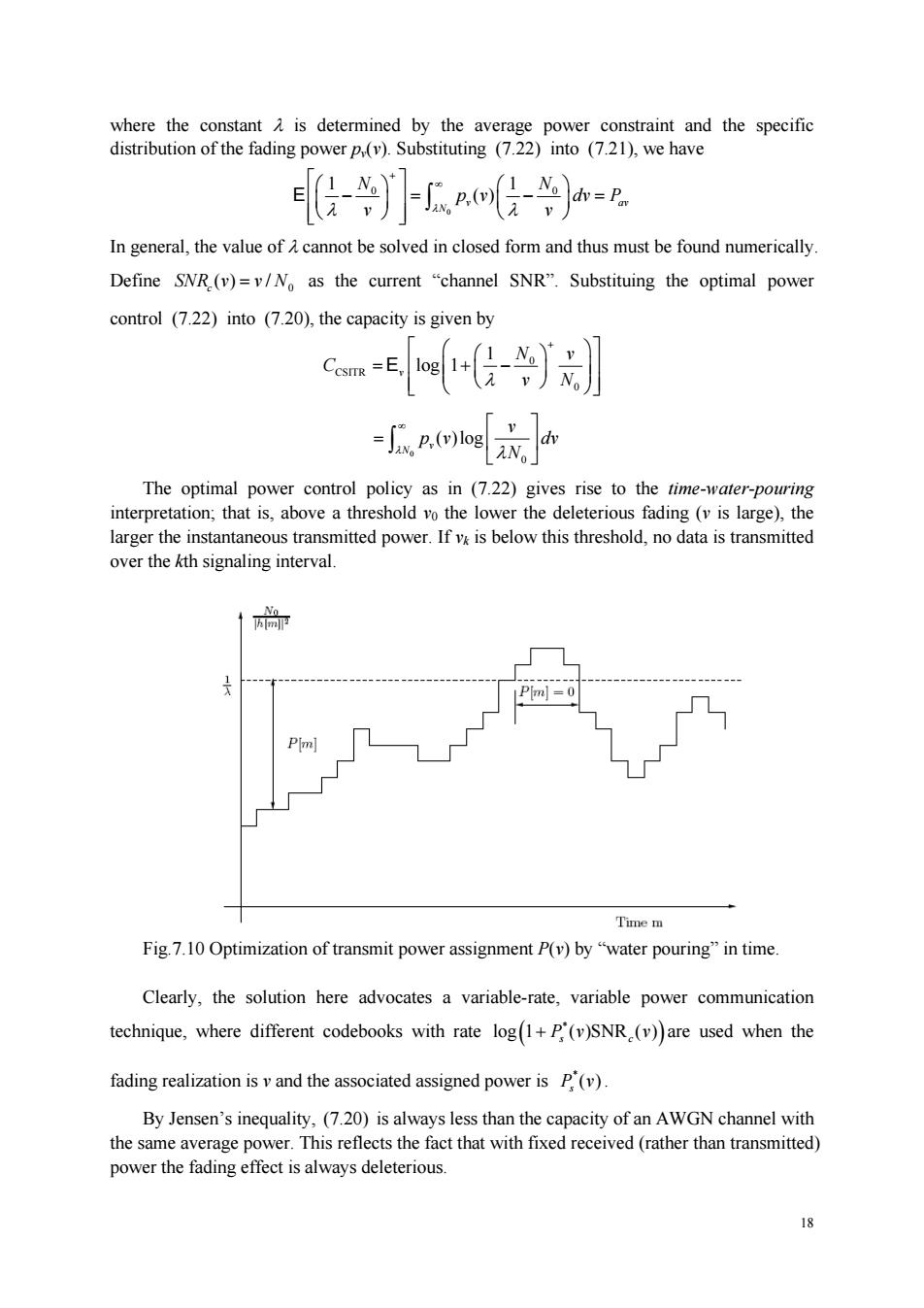正在加载图片...

E设]侵=e In general,the value ofcannot be solved in closed form and thus must be found numerically Define SNR(v)=/N as the current "channel SNR".Substituing the optimal power control (7.22)into (7.20),the capacity is given by g刘 -[ The optimal power control policy as in (7.22)gives rise to the time-water-pouring interpretation;that is,above a threshold o the lower the deleterious fading (is large).the larger the instan ransmitted power.Ifis below this threshold,no data is transmitted over the kth signaling interval. 1 Time m Fig.7.10 Optimization of transmit power assignment P()by"water pouring"in time Clearly,the solution here advocates a variable-rate,variable power communication technique,where different codebooks with rate log(1+P(v)SNR(v))are used when the fading realization isand the associated assigned power is P() By Jensen's inequality,(7.20)is always less than the capacity of an AWGN channel with the same average power.This reflects the fact that with fixed received(rather than transmitted) power the fading effect is always deleterious.18 where the constant is determined by the average power constraint and the specific distribution of the fading power pv(v). Substituting (7.22) into (7.21), we have 0 1 1 0 0 ( ) v av N N N p v dv P v v E In general, the value of cannot be solved in closed form and thus must be found numerically. Define 0 () / c SNR v v N as the current “channel SNR”. Substituing the optimal power control (7.22) into (7.20), the capacity is given by 0 CSITR 0 1 log 1 v N v C v N E 0 0 ( )log v N v p v dv N The optimal power control policy as in (7.22) gives rise to the time-water-pouring interpretation; that is, above a threshold v0 the lower the deleterious fading (v is large), the larger the instantaneous transmitted power. If vk is below this threshold, no data is transmitted over the kth signaling interval. Fig.7.10 Optimization of transmit power assignment P(v) by “water pouring” in time. Clearly, the solution here advocates a variable-rate, variable power communication technique, where different codebooks with rate * log 1 ( )SNR ( ) Pv v s c are used when the fading realization is v and the associated assigned power is * ( ) P v s . By Jensen’s inequality, (7.20) is always less than the capacity of an AWGN channel with the same average power. This reflects the fact that with fixed received (rather than transmitted) power the fading effect is always deleterious